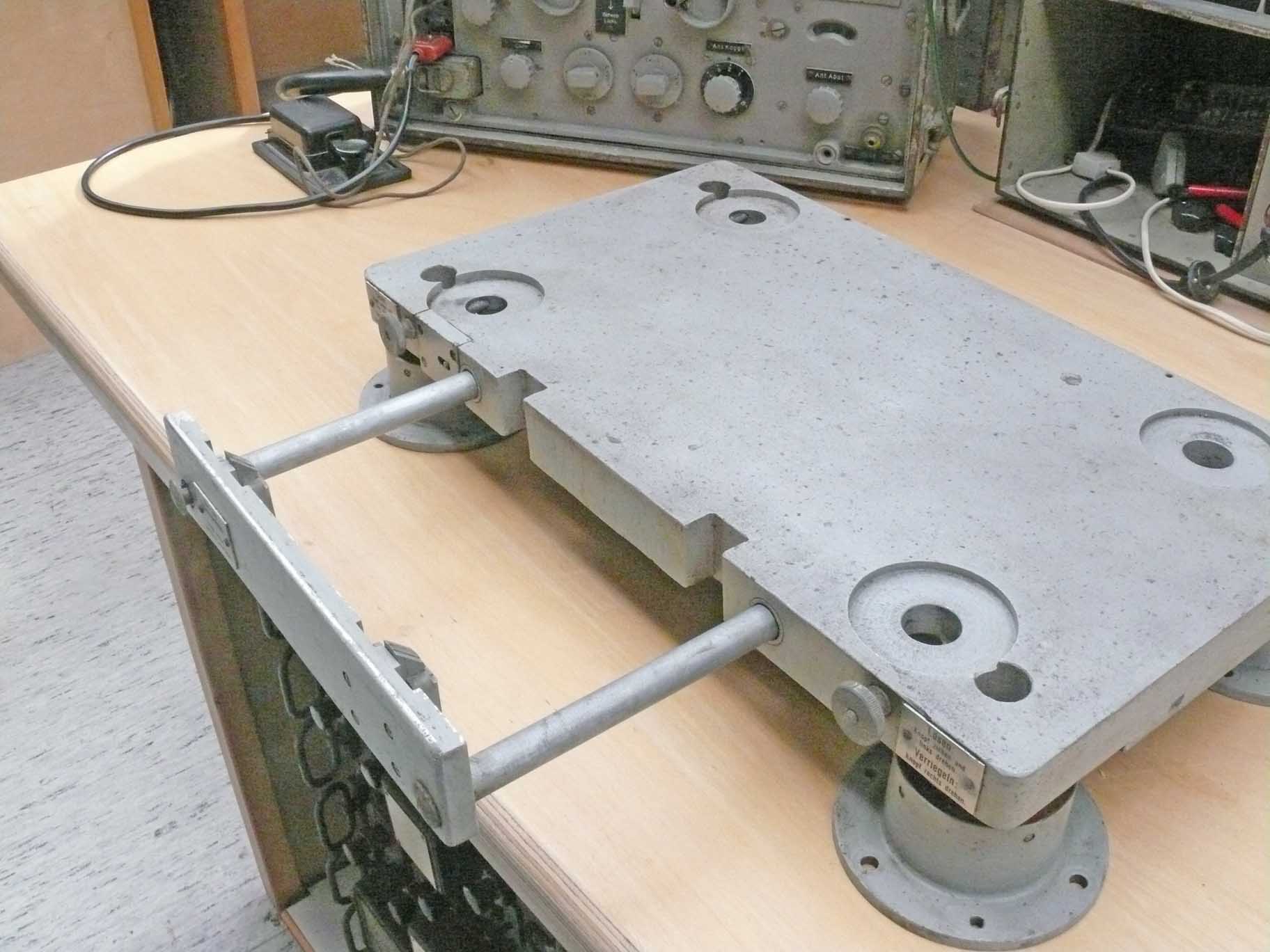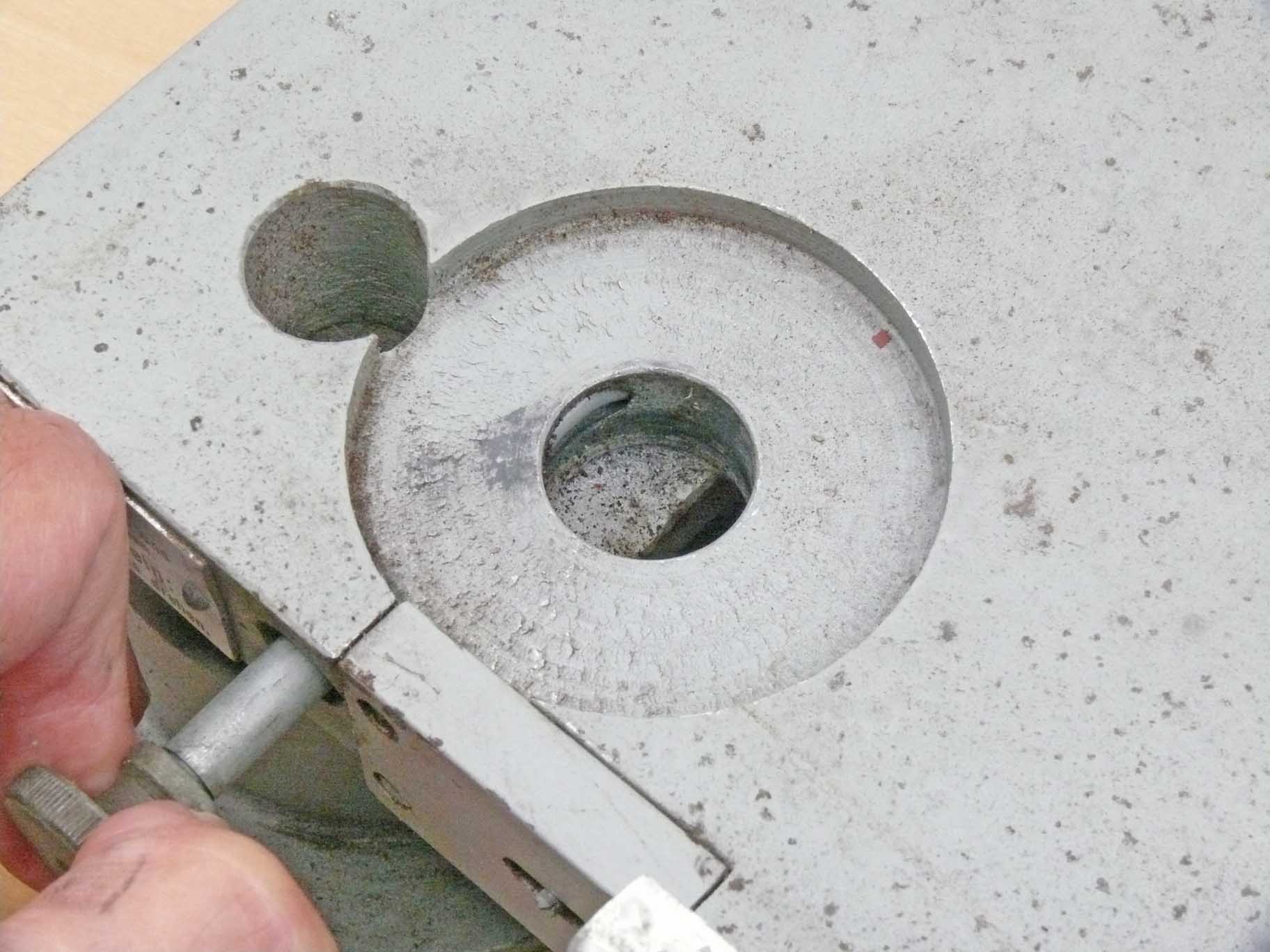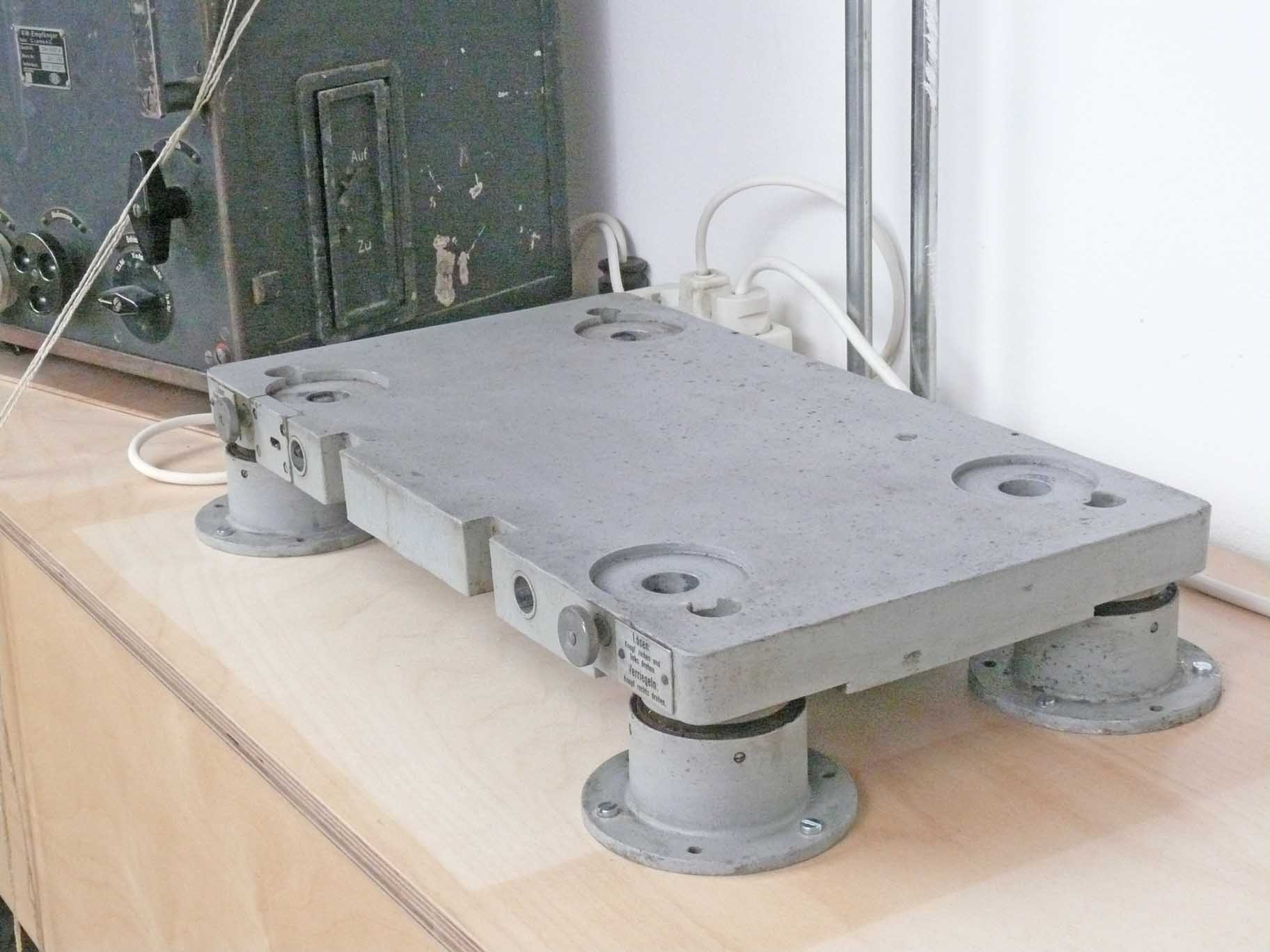
Quite rare mounting frame to the
Lo 6 K39 and Lo 6 L39
receivers
16 September 2016

The die cast mounting base for all Lo 6 receiver series
One may have wondered wherefore the strange 'foots' the Lo 6 receivers are resting at.
Please imagine, the Lo 6 receiver series was mainly meant for naval operations. Onboard ships the vessel movements can be heavy and erratic.
Therefore special precautions should be taken.
Please bear in mind that the Lo 6 receiver series are rather bulky and heavy.
What would happen when being off-shore on a rough sea when a valve (RV 12P2000 or that like) should have to be replaced?
Therefore a special provision was incorporated. Shown above, the two solid rods could be pulled-out and acting as a temporary module mounting; also preventing that the receiver block can slip out of the receiver case entirely.

Viewing the mounting frame just in front

Genuine German plate information: Lösen: Knopf ziehen und links drehen. Verriegeln: Knopf rechts drehen
Briefly: as to unlock the receiver foots pull the knob and turn it anti-clockwise. As to lock the receiver module onto the foot-plate (mounting) turn the knob clockwise.
Wherefore all this?

Please notice the rod (shaft) on the left-hand side
Providing unlock for a Lo 6xx foot

It is clear now that the shaft has been adjusted in its locking position
These provisions are provided on the left- as well as right-hand side.

The locking- unlocking shafts run both at the far left- and right-hand sides
The quite heavy tubes more towards the centre cover the two lid shafts, occasionally carrying the receiver (inner) module in case of repair.
It is quite evident that the construction is heavy and crude.

Quite well visible is that the mounting-lid can be pulled-out for 14 cm
The next day my friend Tom was so kind to support me with his carpenter skills.

Before he started we tilted the Lo6K39 rearwards as to allow taking a photo of a mounting-foot of the Lo6K39 receiver housing
The curved (slim) section is to allow that the RX can be locked onto the mounting plate.

Viewing one of the rubber-shock-absorbers, between the mounting plate and the table. Especially onboard ships such provision is essential.

The four buffers being mounted on their places

It proved that Tom did a good job, because all counter-fitting well together

Our rather heavy Lo6K39 beast being fixed at its genuine mounting frame, and the auxiliary lid being pulled out of the mounting frame

Viewing the way the RX module can be safely pulled out of its housing, as to allow, for instance, a valve change on the left-hand receiver side
The amount of pulling out is given by the mechanical lid-fixation.

Noticing the right-hand side valves access

Viewing our Lo6 K39 and Lo6L39 display setup
Peter Zijlstra (PA 0 PZD) was so kind to help me out with some photos from his private archive.

Viewing the setup shown in the genuine L06K36 manual
Courtesy Peter Zijlstra

Maybe of more interest, looking inside a wartime KM receiving room
Photo courtesy Pater Zijlstra
When you look carefully, you may have already noticed that the first two receiver desks do carry two receivers. Though, the third desk (table) has been fit on the right-hand side with a Lo6K39 (Lo6L39?); but left of it we see most likely a Main T9K39 (super-heterodyne) receiver. When long waves being covered it should have been a Wupper T8L39.
Last but, Deo volente, not least a curious photo.

We are quite certain viewing at a calibration place
In the background, we notice a wall full of R&S quartz clock controlled frequency standards
The white field in the upper centre is a printing device likely responding onto frequency deviations.
The two receivers in front, most likely provided a means as to check their own frequency standard against another international Bureau of Standards (amongst it the US station designated WWV. There also exist photos showing a setup of LWE a or KWE a receivers. In another occasion they relied upon E52 (Köln) receivers, albeit strongly modified by R&S; and very expensive as these latter devices were sold about 1963 for 1500 DM!
By Arthur O. Bauer